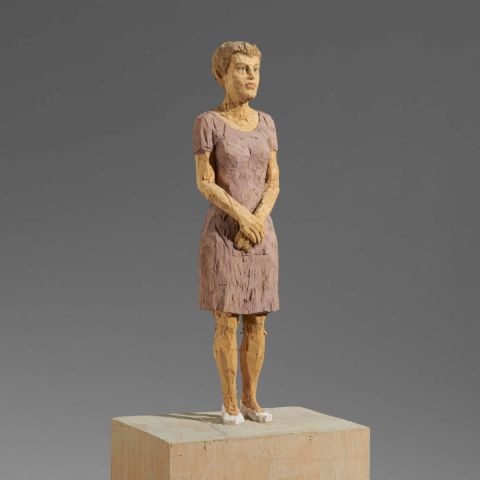
Lot 58 | Sam Francis | Untitled
1923 San Mateo, CA/USA - 1994 Santa Monica, CA/USA
Title: Untitled.
Date: 1959.
Technique: Tempera on paper.
Mounting: Mounted on canvas.
Measurement: 68 x 51cm.
Frame/Pedestal: Framed.
This work is listed at the Sam Francis Foundation, Pasadena/CA, under identification number SF59-076. It is featured on the artist's official website. (www.samfrancisfoundation.com)
Provenance:
- Galerie Schmela, Düsseldorf
- Private collection, North Rhine-Westphalia (acquired from the previous owner in 1961)
Exhibitions:
- Cologne Art Association, 1962 (adhesive label)
Literature:
- Exhib. cat.: Sam Francis, Georges Mathieu, Charles Maussion, Jean Miotte, Jean Paul Riopelle, Cologne Art Association, Cologne 1962, n.p.
- Explosive, gestural early work with a dynamic interplay of colour and space
- The influence of his travels to Japan from 1957 onward and his affinity with the Gutai group of artists are clearly evident in this work
- The Japanese concept of "Ma" and the painting technique of "Hatsuboku" are clearly reflected in Francis's own distinctive formal language
The Healing Power of Art
Sam Francis was born in San Mateo, California, in 1923. His artistic journey began with an experience of physical and emotional trauma. In 1943, he joined the U.S. Army Air Corps, but a serious accident during a training exercise in 1944 forced him to leave military service. Francis spent the following years in various clinics. During his recovery, he discovered art, initially as a distraction, but eventually as a means of existential expression. After returning to the University of California, Berkeley, Francis studied with David Park from 1947 to 1950. During this time, Clyfford Still and Jackson Pollock shaped his understanding of color and movement. In 1950, Francis moved to Paris, where he encountered Jean-Paul Riopelle and Monet's water lilies, finding new sources of inspiration. His first solo exhibitions in Paris, Bern, and London brought him attention, especially in Europe. In 1957, a trip to Asia lasting several months provided him with new inspiration: Chinese and Japanese art, especially the concept of “Ma,” empty but meaningful space, became central to his work.
The year 1959, when the work “Untitled” presented here was created, marked a high point in his career: Francis participated in more than 17 group exhibitions worldwide, including documenta II in Kassel and the São Paulo Biennial, which finally brought him international fame. During this phase, a style emerged that was characterized by tension and a deep exploration of the energy of color.
The promise of emptiness
The 1959 work “Untitled” is exemplary of this phase. The viewer is presented with a vibrant picture surface crisscrossed with splashes and spots of color. Islands of color in bold complementary colors condense at the edges, while the center remains white, broken only by seemingly random, fine splashes of color. This white is not merely a background, but an active part of the composition: it allows the strong colors to breathe, enhances their luminosity, and gives rhythm to the picture surface.
Here, the concept of “ma” becomes clear, that space in between, which in Japanese aesthetics does not mean emptiness, but potential. Francis reverses the traditional pictorial order: the explosions of color frame the white space, giving it weight and meaning. In doing so, he shifts the perspective: the middle, traditionally the center of attention, remains white, but it is not empty. The eye wanders from the color-intensive zones at the edge of the picture to the apparent background of the middle, which oscillates between tension and relief. This creates a dialogue between density and emptiness, movement and stillness. The work derives its tension in particular from the contrast with the idea of a symmetrical order centered on the middle. Francis plays with this expectation and reverses it, disrupting the viewer's viewing habits and creating space for a balance of asymmetry, movement, and rhythmic color distribution. Francis's approach to chance becomes understandable in the context of his engagement with the Japanese Gutai group. As in the technique of “Hatsuboku,” in which ink is seemingly randomly splashed onto the medium, he trusts in gesture and spontaneous movement. Yet despite the spontaneity, his composition is deliberately structured: the distribution of color creates a visual balance that feeds on the tension of opposites.
In Francis's understanding, color itself is not a tool, but essence. Francis understands color as an energetic force, as an expression of the flow of life. The image carrier becomes a resonance chamber for this energy, which arises from the movement of painting. The apparent disorder follows an intuitive composition whose dynamics arise from the tension between edge and center, between explosion and calm.
Sophie Ballermann
Print this lot | Recommend lot |
Conditions of this Lot
32% buyer’s premium on the hammer price
Estimated shipping costs for this lot:
Arrangement after the auction.
Sam Francis USA Informel Abstract Expressionism Nouvelle École de Paris Post-War Art Post War 1950s Framed Abstract Works on paper Tempera





